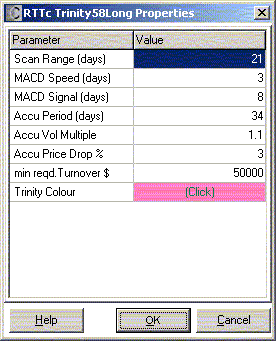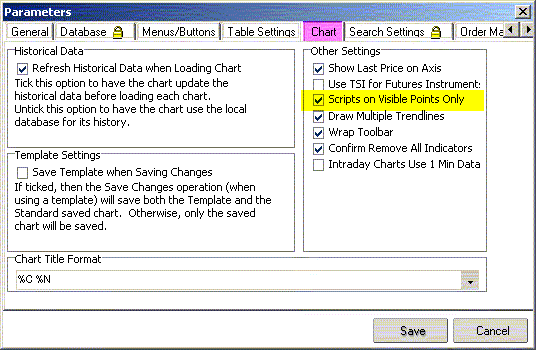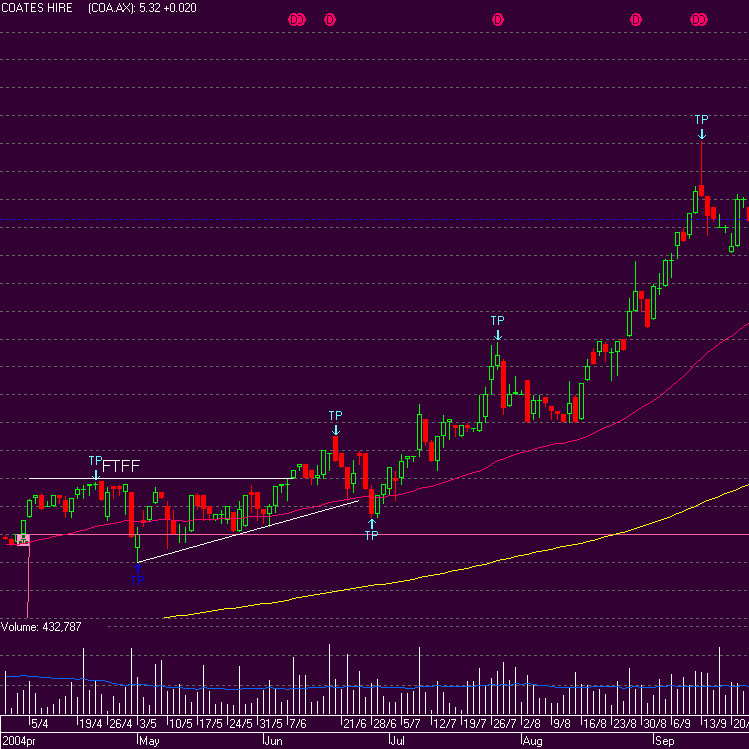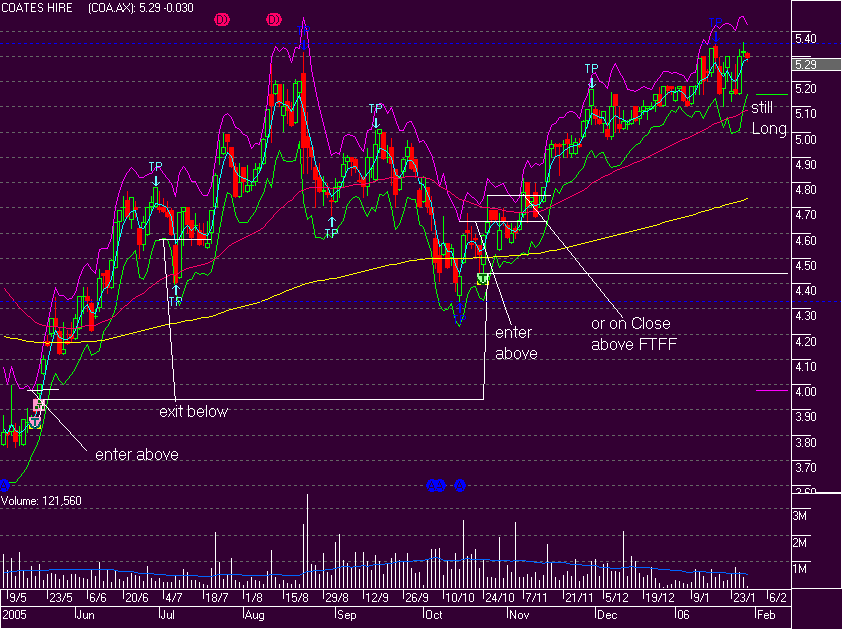|
Script:
RTTc Trinity58Long
 Back to Catalogue Back to Catalogue
Purpose
:
Chart version of an Entry Script scanning for Long Trinity trades
It draws two different icons -
 when the MACD speed has risen above average when the MACD speed has risen above average
 when the MACD speed has crossed above zero. when the MACD speed has crossed above zero.
All other Trinity requirements must also be met: see "Trinity Approach" below.
Each icon is further differentiated by one of two colours: a pink background acts as a warning that volume has dropped off since the most recent Accumulation indicator. I have found this correlates quite often with a subsequent FTFF retracement.
The green background represents the "Classic" Trinity entry, with $Turnover on a similar level as at the latest A. (In the current script, 80% or above turns the colour green.)
The icons are drawn below the Signal candle; they are linked by a horizontal line at the most recent Signal level.
Please Note: "The Trend is your friend." is no idle cliche, but must be observed regardless of the indicators used in a Trading Plan.
To save time, it is recommended to set the global chart parameters to "calculate visible points only". This means the script calculates and draws icons and lines only for the days visible in the current window. (see "Parameters" below)
If you zoom out and wish to expand the plot, right-click inside the window, select the script's Properties, and click "OK". That will redraw the plot for the larger time frame.
Please note that scripts work on any time scale. Substitute "tick" (week, hour, month...) for "day" where appropriate.
 Back to Catalogue Back to Catalogue
References:
Trinity Approach
MDS: Accumulation pre-alert
MDS: Technical Indicators Look specifically for MACD and Stochastic.
 Back to Catalogue Back to Catalogue
Application:
DNA: It is most important to find the parameters that can be shown to give best results for any particular stock. While the defaults have shown great results in general scans and trades, there is "always room for improvement". For example, one stock may tend to break out up to 30 days after the last A(34), whereas others may become unstable if it takes longer than a couple of weeks.
Trade Horizon: Measuring more than 50 trades coming out of one month's worth of alerted stocks, the average time in trade was close to 60 days. If you prefer shorter trades, you may wish to shorten the Accu period; if longer, try MACD periods more commonly used in general literature.
Entry and Exit: Taken on its own, a Trinity signal indicates a change in trend. As a rule, a next-day gap-up can usually be bought; where an FTFF looks likely, I tend to hold back. Since studying ATR Multiples, I have found that a single or 1.5 ATR above current price level (--> "DNA") can refine the entry process. Using the ATR Envelopes as an example, I try to get set as closely as possible to the last pink Low preceding the Signal day.
There are certain obvious exceptions: If the current price bands are still falling, it may be advisable to wait. See RTT ATR EnvelopesEx for details.
 Back to Catalogue Back to Catalogue
Parameters:
Scan Range = age limit of the most recent Accumulation Indicator
MACD Speed = fast period of MACD
MACD Signal = Signal period of MACD
Accu Period,
Vol Multiple,
Price Drop% = parameters for Accumulation Indicator
min reqd.Turnover $ = Ignore stocks with low daily turnover

Global (File) Parameter Setting for Chart to draw plotted scripts faster:

 Back to Catalogue Back to Catalogue
Example: Entry signals

Example: Watch Trendlines - this is why

Example: pink colour, FTFF likely

Example: Entry and Exit by ATR Envelope

Back to Catalogue
|





